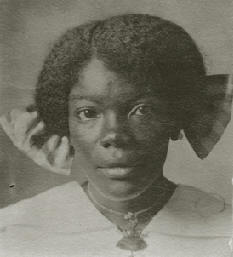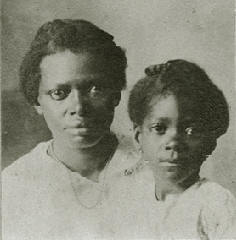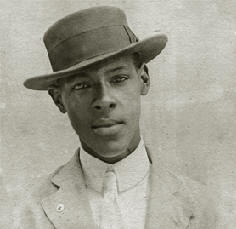|
Juliana Francis
Juliana Francis, a 28
year-old left her native St. Croix to find work on St. Thomas as a
House-worker. On September 5, 1918, she walks from No. 17 & 18 Berge Gade,
to the US Naval Government Secretary’s office in the Administration
Building, downtown Charlotte Amalie, to complete her Travel Pass
application.
Juliana’s parents,
William Francis and Joanna Germain, were members of St. Patrick’s Church of
West End. She and can see the ghostly Slips on Hassel Island, mountains of
coal awaiting the steamers of the various Packet Lines. Already, Juliana has
seen enough calamity: The 1916 Hurricane fell on October 9th and
10th. The December, 1916, coal workers Strike, the seamen of the
Valkyrien, young Marines carrying the wide baskets of coal on their backs.
The First World War was gripping the mood on the island.
For the first eight
months of 1918, deaths from contagious diseases have been rampant and eerily
competitive on St. Thomas and St. Croix: on each island, eleven deaths
resulting from Dengue Fevers, six deaths from Pulmonary Tuberculosis, and
five deaths from Typhoid. All residents of St. Thomas between 5 and 45 years
of age have been vaccinated.
Two days before Juliana
set out to complete her Travel Pass application, the sailing sloop, La
Gracia, returned from neighboring Tortola, filled with “Excursionists,”
who had left to celebrate Labor Day. There was a Serenade, cricket match, a
concert, and another evening of entertainment.
Yet, Juliana had not
risked the excursion trip to Tortola. Instead, she had been preparing
clothes for herself and Leandra, ironing and folding their best pieces.
Later in the morning,
Juliana would hug the shade of the curving alley, to buy two tickets for
Steerage Class on the Parima, a steamship due from Surinam and bound for New
York City. Thoughts of her god-parents, Andrew Ditty and Alice Benny,
tearfully came to mind. Juliana checked her purse for the two photographs
required for the Travel Pass.
The photographs show a
brutal desire and fierce protection for her daughter, Maria Juliana Leandra
Greaux, a five-year old, sitting on her knee. Both wear a crown of thick
hair, braids form an enduring crown: Mother and child as portrait.
No doubt retrieved for
the occasion, a single strand of beads falls softly over Juliana’s richly
embroidered dress collar, an eerily-shaped noose in once-brutal times. Her
application’s declaration (“for the purpose of visiting a friend”), is
belied by the formality which followed, (“Mrs. Elaine Christian”).
As Juliana passes a
makeshift news-stand, a torn poster catches her eye with a poignant
announcement: “Lecture, Monday, September 30th, at 8:30 p.m.
Under the auspices of the American Historical Research Society, in the Hall
of the United Labouring Association, on Subject: The early political, social
and industrial conditions of the American People.” A series of lectures
promising “to open your eyes to things American.” The advertisement’s
tag-line haunted her deepest desire: “Be present and then decide what can be
done for our island home.”
She had saved a
January 30th, 1918 newspaper dispatch from New York, tucking it
in the bottom of her valise:
“European food experts are agreed
that the entire world
will be brought
to the verge of
starvation if the
European war continues to
more,” Dr. Maurice Egan U.S. Minister to Denmark
said last night. “The
northern European
neutrals,” Dr. Egan
declared, “are in dire
straights. Food is so
scarce in Denmark
famous Danish wolfhounds
are being slaughtered for food.” Dr. Egan, who recently returned from
Copenhagen for a
rest, warned the people
of the U.S. against German espionage and declared that
every citizen should wake
to its danger.
He
added that “the people of Denmark
now are living practical
slavery and that the same is true of other European neutrals.”
|




